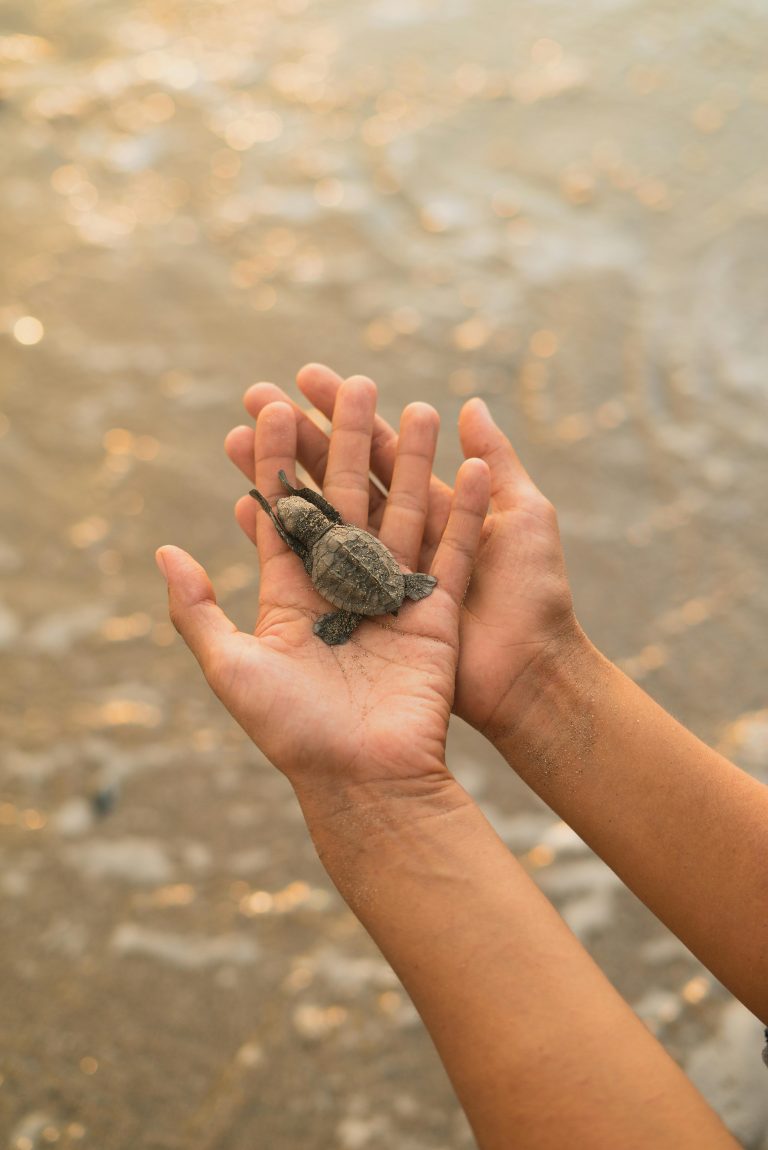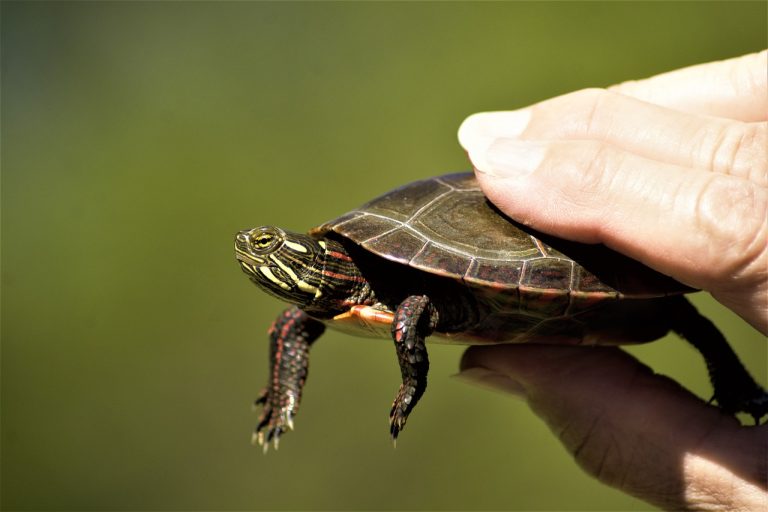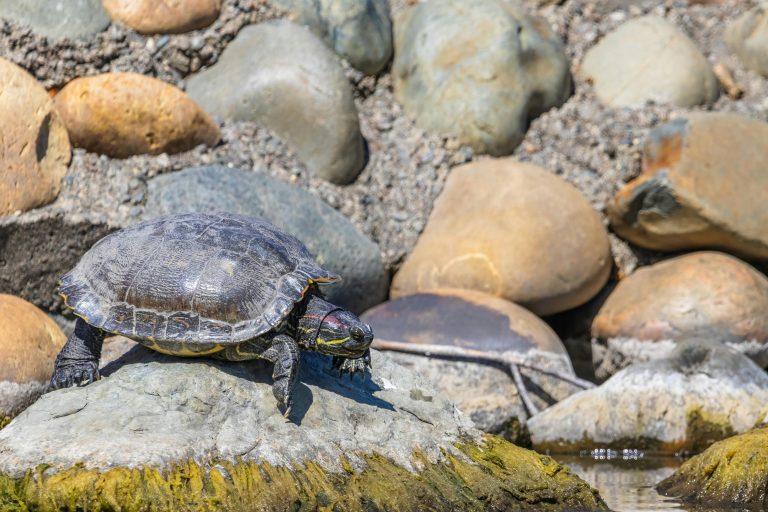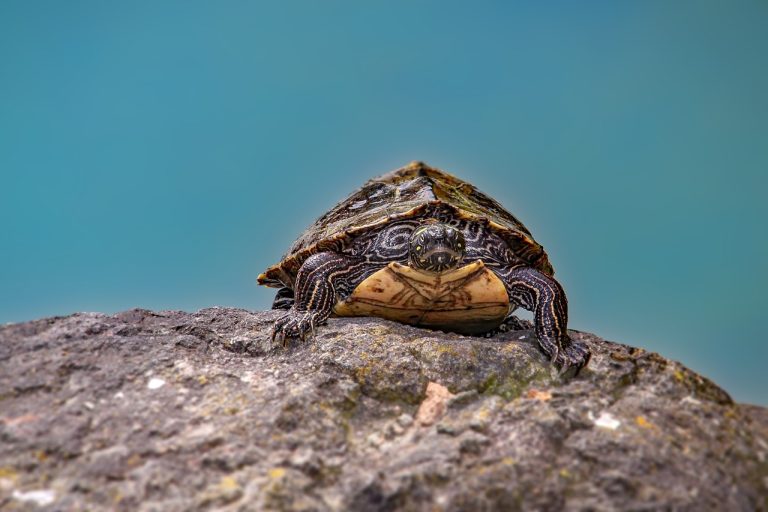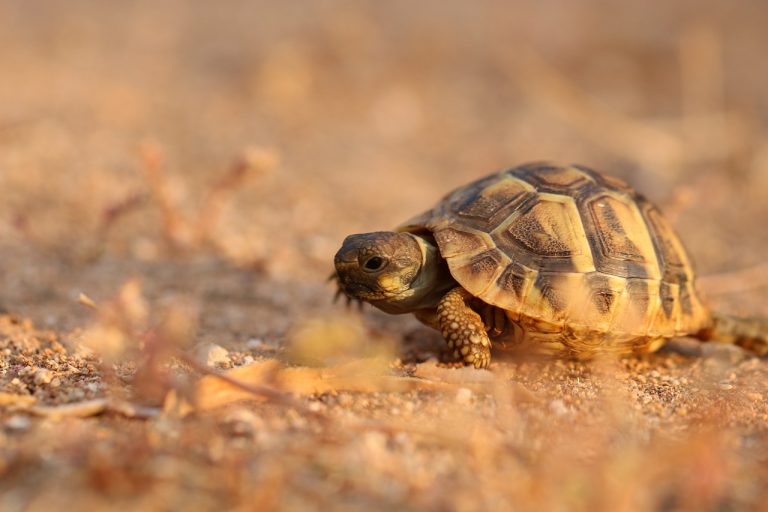Frequently Asked Questions About Red-Eared Slider
Red-eared sliders hold the title for the most popular pet turtle in the USA, and it’s not hard to see why. Their distinctive appearance catches the eye of many turtle enthusiasts. What’s more, caring for them isn’t as daunting as you might think. Yet, despite their popularity, there’s still a lot of confusion swirling around these fascinating creatures. In this piece, I aim to address the common queries and misconceptions about red-eared sliders. Dive in, and you might just uncover some valuable insights!
So here we strat with the questions now!
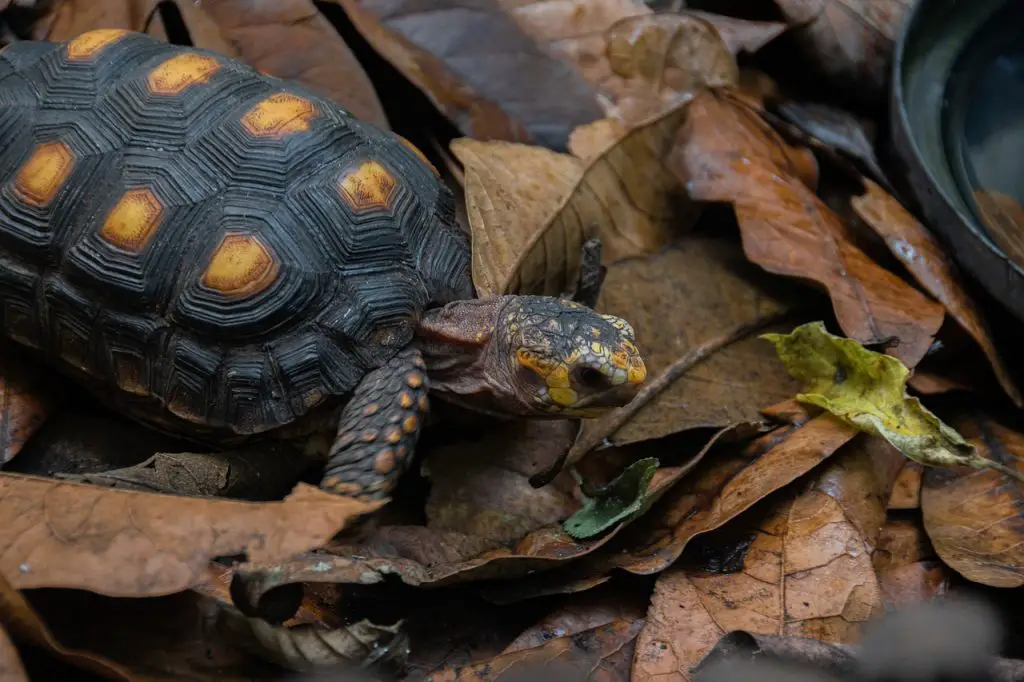
Are Red-Eared Slider Turtles Good Pets?
It’s a nuanced question with no simple answer. Oftentimes, people are drawn to owning a pet turtle simply because they find them irresistibly cute in the pet store. However, many soon realize that caring for a turtle demands more time and effort than they anticipated. It can be disheartening to realize that you’re not fully prepared for the commitment.
If you’re not ready to dedicate at least half an hour of your daily routine to caring for your turtle, then owning a red-eared slider might not be the best choice for you.
On the other hand, if you’ve taken the time to thoroughly research red-eared sliders and understand their care requirements, they can be wonderful companions. With proper knowledge and preparation, keeping red-eared sliders can be a rewarding experience. Unlike some pets, they don’t demand constant attention from their owners. In fact, as they mature, they may not even need to be fed daily. Instead, maintaining the right environmental conditions becomes crucial when caring for red-eared sliders. These conditions include:
Ensuring Adequate Space:
Red-eared sliders don’t stay tiny forever. In a short span, they can grow quite large. Adult females can reach up to 12 inches in length, while males typically reach around 6 inches. So, when considering bringing home a red-eared slider, it’s vital to ensure you have ample space to accommodate their growth.
Many new owners make the mistake of assuming their baby red-eared slider will remain small indefinitely. This misconception is one of the most common pitfalls in turtle care. It’s important to understand that turtles can outgrow their enclosures rapidly. You’ll need to plan ahead and ensure you can provide enough room as your turtle matures.
An adult female red-eared slider requires a spacious habitat, such as a glass aquarium of at least 75 gallons, or a commercial turtle tub or wading pool.
Investing in Effective Filtration:
Turtles are notorious for making a mess in their habitats. They can quickly dirty the water, especially since they feed underwater. This means a robust filtration system is essential for maintaining water quality. Consider investing in a powerful canister filter to keep your turtle’s environment clean. Even with a top-notch filtration system, regular water changes are necessary. Be prepared for these maintenance tasks before bringing home a red-eared slider.
Considering Overall Costs:
Many owners find themselves unable to keep up with the financial demands of caring for red-eared sliders, leading to them being surrendered for adoption. Some new owners are enticed by the low initial cost of adopting a red-eared slider, unaware of the ongoing expenses.
Before committing to a red-eared slider, be aware of the long-term financial responsibilities. You’ll need to budget for a large aquarium, filtration system, UVB light fixture, heat lamp, basking area, turtle food, supplements, veterinary care, and ongoing electricity costs.
Addressing Veterinary Care:
Finding a qualified reptile veterinarian can be challenging in many areas. Without access to proper medical care, red-eared sliders may suffer from untreated health issues. Additionally, veterinary costs for reptiles can be comparable to those for cats or dogs.
Understanding Longevity:
Red-eared sliders can live for up to 20 years or more in captivity, sometimes reaching ages of 50 years or beyond. Bringing home a red-eared slider means committing to caring for it throughout its potentially long lifespan.
Awareness of Disease Risks:
Many pet turtles, including red-eared sliders, carry Salmonella bacteria in their digestive tracts. While handling a turtle alone is unlikely to cause illness, Salmonella can pose a risk if ingested. Proper hygiene practices can help minimize this risk, but it’s important to be cautious, especially around children and elderly individuals with weaker immune systems.
In conclusion, red-eared sliders can make wonderful pets for those who are prepared to provide the necessary care. However, it’s crucial to consider their space requirements, ongoing expenses, access to veterinary care, potential lifespan, and disease risks before bringing one home. Proper research and dedication are key to successfully caring for a red-eared slider for the duration of its life.
Are Red Eared Slider Turtles Smart?
Turtles, particularly red-eared sliders, possess surprising intelligence. Each red-eared slider turtle showcases its own distinct personality and traits, often leaving owners in awe of their cleverness. Believe it or not, you can train a red-eared slider to some degree, much like you would a cat or dog. I’ve witnessed owners successfully train their turtles to respond to cues and commands, such as coming when called or recognizing words like ‘food’ or ‘down’.
It’s important not to underestimate the individuality of a red-eared slider. Just like humans, each one exhibits its own unique characteristics. Some may relish human interaction, while others prefer a more tranquil existence. And let’s not forget about the spirited and adventurous ones among them.
Many owners are now discovering that red-eared sliders can even be trained to perch calmly on their hands. While turtles may not be as overtly expressive as cats or dogs, they undoubtedly possess a depth of personality that often surprises us. So, don’t be surprised if your red-eared slider exhibits behaviors and quirks that are uniquely their own.
Are Red Eared Slider Turtles Friendly Or Aggressive?
Red-eared sliders, while often considered pets, retain their wild instincts to some extent. However, each individual slider possesses its own distinct personality, shaping its unique behaviors. Extensive studies have shown that red-eared sliders tend to be more sociable compared to many other turtle species. It’s not uncommon to observe owners hand-feeding their sliders. If your turtle happens to nip at your finger during feeding, it’s likely a case of mistaken identity rather than aggression.
Over time, captive red-eared sliders become familiar with their environment and can even recognize their owners. However, their interactions are typically limited to moments of excitement, such as during feeding time. Wild red-eared sliders may not exhibit such familiarity with humans.
It’s worth noting that some red-eared sliders may not enjoy being handled. In such instances, attempting to pick them up could provoke defensive behaviors, including biting, hissing, or retreating into their shells when feeling threatened. Understanding and respecting your turtle’s individual preferences and boundaries are crucial for nurturing a positive relationship with your pet.
Are Red Eared Slider Turtles Illegal?
Currently, the United States government has imposed a ban on the sale of red-eared slider hatchlings within the country. However, these turtles are still bred domestically for export to other nations.
Under recent legislation in the United States, it is illegal to sell a red-eared slider with a shell size measuring less than 4 inches. This precautionary measure aims to address the known risk of salmonella transmission associated with baby turtles.
It’s crucial to emphasize that collecting wild red-eared sliders is not only against the law but also considered unethical. Instead, individuals interested in owning a red-eared slider are encouraged to seek out reputable turtle rescue centers or adoption facilities. By adopting from these sources, not only do you adhere to legal regulations, but you also provide a home for a turtle in need.
Are Red Eared Slider Turtles Social?
Currently, the United States government has imposed a ban on the sale of red-eared slider hatchlings within the country. However, these turtles are still bred domestically for export to other nations.
Under recent legislation in the United States, it is illegal to sell a red-eared slider with a shell size measuring less than 4 inches. This precautionary measure aims to address the known risk of salmonella transmission associated with baby turtles.
It’s crucial to emphasize that collecting wild red-eared sliders is not only against the law but also considered unethical. Instead, individuals interested in owning a red-eared slider are encouraged to seek out reputable turtle rescue centers or adoption facilities. By adopting from these sources, not only do you adhere to legal regulations, but you also provide a home for a turtle in need.
Are Red Eared Slider Turtles Social?
Social behavior encompasses a wide spectrum of interactions, from forming friendships and romantic relationships to engaging in mutually beneficial rituals. While turtles are not typically considered highly social creatures by researchers, they do partake in various communal activities throughout their lives.
One of the most prominent social behaviors observed in turtles is during mating season. Male and female red-eared sliders come together during this time, with males often engaging in competition to win the favor of a female. Additionally, some turtle species exhibit nesting behaviors where they prefer to nest in close proximity to one another.
In captivity, turtles can also display social signs when basking and feeding together. While these interactions may not be as complex as those seen in more social species, they still reflect a level of communal activity among turtles. Overall, while turtles may not exhibit social behaviors in the same way humans or other animals do, they still engage in various rituals and activities that promote social interaction within their species.
Are Red Eared Sliders Nocturnal?
Contrary to nocturnal animals, red-eared sliders are diurnal creatures, meaning they are active during the day and rest at night, much like humans. To regulate their body temperature and maintain their health, red-eared sliders bask under a UVB light and heat lamp. While they may appear to be resting while basking, they are still alert and aware of their surroundings. This behavior allows them to dry themselves thoroughly and absorb essential UV rays, crucial for their overall well-being.
Do Red Eared Sliders Need To Be In Water All The Time?
Indeed, red-eared sliders, despite being aquatic turtles, don’t spend all their time submerged in water. Like many other aquatic turtles, they require periods of basking on dry land. This behavior is vital for their overall health and well-being. Therefore, it’s essential to provide a designated basking area within their enclosure.
This basking spot should always remain dry and be equipped with both a UVB light and a heat lamp. These lighting sources mimic the natural sunlight and warmth that red-eared sliders would experience in their natural habitat. By ensuring they have access to a proper basking area, you’re helping to support their healthy growth and development.
How Long Can A Red Eared Slider Turtle Go Without Food?
Here’s a surprising tidbit for you:
Did you know that a healthy adult red-eared slider can actually go for months without eating? It’s true! Just like their wild counterparts, they enter a sort of hibernation mode during the winter months, where their activity levels plummet and their metabolism slows way down.
But here’s the twist: while wild red-eared sliders go into hibernation, those in captivity typically don’t. Why? Well, they’ve got it pretty good with their attentive owners providing a steady stream of food, stable temperatures, and consistent UVB light. No need for hibernation when everything’s just right!
Even if they’re not chowing down regularly, captive red-eared sliders can go weeks without food, as long as they have access to clean water for swimming and drinking. It’s a survival skill they’ve honed in the wild, where food availability can be sporadic.
And get this: with the proper setup, including a dry basking area with UVB and heat lamps, they can even survive for months without a meal! It’s all about creating a habitat that mimics their natural environment and ensures their well-being.
Do Red Eared Slider Turtle Bite?
Absolutely, red-eared slider turtles can indeed bite, especially when they feel threatened, scared, or irritated. While their bites typically just hurt without spreading infection or disease, it’s worth noting that their jaws can cause real harm, particularly to children with smaller fingers. That’s why I always advise against children handling red-eared sliders or any other turtle species for that matter. It’s better to err on the side of caution to prevent any potential accidents or injuries.
Is My Red Eared Slider A Boy Or Girl?
If you’re trying to determine the sex of a red-eared slider, here’s a handy guide to help you out:
- Tail Length and Thickness: Male red-eared sliders typically have longer and thicker tails compared to females, especially as they reach adulthood. This difference in tail size is quite noticeable.
- Cloaca Position: Take a look at the cloaca, the opening used for reproduction and waste elimination. In males, the cloaca is located closer to the body and has a more rounded shape, while in females, it’s positioned further away and appears more oval-shaped.
- Nail Length and Sharpness: Check the nails on the front feet of the turtle. Female red-eared sliders tend to have shorter nails, whereas males often have longer and sharper nails. This distinction is particularly evident when examining the front limbs.
By paying attention to these characteristics, you can get a good idea of whether a red-eared slider is male or female.
Can Red Eared Slider Turtles Breathe Underwater?
Indeed, red-eared slider turtles have a fascinating ability to breathe underwater. Unlike us humans who hold our breath, these turtles absorb oxygen dissolved in the water through their cloacal cavity, located beneath their tail.
This unique method allows red-eared sliders to stay submerged for extended periods without needing to surface for air. In fact, they can remain underwater for months at a time, especially in the wild during colder temperatures.
It’s just one of the many remarkable adaptations that enable these turtles to thrive in their aquatic environments.
How Long Do Red Eared Slider Turtles Live For?
While there’s no one-size-fits-all answer to how long a turtle can live, red-eared sliders have impressive lifespans. In the wild, they often exceed 30 years, showcasing their resilience and adaptability in natural habitats.
However, when kept in captivity with attentive care, red-eared sliders can thrive for up to 20 years or even longer. Providing a suitable environment with proper nutrition, clean water, and appropriate habitat conditions can significantly impact their longevity and overall well-being.
Ultimately, the lifespan of a red-eared slider, like any living creature, can vary based on various factors including genetics, environment, and the quality of care it receives.
Do Red Eared Slider Turtles Hibernate?
Absolutely, red-eared sliders do indeed hibernate, particularly in their natural habitat. When winter arrives and temperatures drop, these turtles, like many other aquatic species, enter a state of hibernation. During this time, their metabolic rate decreases significantly, allowing them to survive without food for extended periods.
However, the hibernation process might not occur for red-eared sliders kept in captivity. This is primarily due to the stable temperatures maintained in their environment, as well as the regular provision of food and UVB light by their caretakers.
In captivity, where conditions remain consistent, hibernation is less likely to occur. Instead, captive red-eared sliders can enjoy year-round activity and sustenance, thanks to the care provided by their owners.
Do All Red Eared Slider Turtles Have Salmonella?
It’s important to recognize that all turtles, including red-eared sliders, naturally carry Salmonella bacteria. Much like how humans shed skin cells, turtles shed Salmonella bacteria, and this can pose health risks, particularly to those with weakened immune systems.
Salmonella infections can indeed be serious and even fatal in some cases. In the United States, approximately 400 deaths occur each year due to Salmonella-related illnesses, with a significant portion of these cases involving contact with reptiles. Red-eared sliders are implicated in more than 50% of these incidents.
Handling red-eared sliders, or any reptile for that matter, can be particularly risky for individuals with compromised immune systems. Children and infants, in particular, are more vulnerable to Salmonella infections and should avoid handling reptiles altogether.
Taking precautions, such as thoroughly washing hands after handling turtles or any reptiles, and avoiding contact between reptiles and individuals with weakened immune systems, can help mitigate the risk of Salmonella transmission.
Do You Need A Heat Lamp For A Red-Eared Slider Turtle?
Absolutely, providing a heat lamp for a red-eared slider is essential for maintaining their health and well-being. Heat lamps are indispensable for all types of aquatic turtle enclosures, as they aid in drying the turtle’s body completely after swimming. This drying process is crucial for preventing shell rot and other health issues.
In addition to a heat lamp, it’s equally important to have a UVB light fixture. UVB light is vital for the proper shell growth and overall health of red-eared sliders. UVB helps turtles metabolize calcium, which is essential for maintaining strong and healthy shells.
Together, a heat lamp and UVB light fixture create an environment that mimics the natural conditions red-eared sliders would experience in the wild, promoting their physical health and well-being in captivity.
Can A Red-Eared Slider Turtle Drown?
Red-eared sliders are indeed excellent swimmers, but it’s essential to ensure they have a way to safely exit the water. As long as you’ve provided a means for them to climb out, you needn’t worry about the turtle getting trapped or drowned. It’s crucial to prevent any situations where the turtle might become stuck underwater.
Always include a basking area in your turtle’s habitat, allowing them to easily access dry land whenever they desire. This basking spot serves as a sanctuary where your turtle can rest, regulate its body temperature, and dry off after swimming. By prioritizing their access to both water and land, you’ll ensure your red-eared slider thrives in its environment.
What Is The Water Temperature For Red-Eared Slider Turtles?
Maintaining the right water temperature is crucial for the health and comfort of your red-eared slider. Aim for a water temperature range of 75 to 86 degrees Fahrenheit to create an optimal environment for your turtle.
Before introducing your turtle to the water, always double-check that the temperature is within this range. It’s essential to prevent the water from dropping below 74 degrees Fahrenheit, as cooler temperatures can compromise your turtle’s well-being.
If you’re dealing with colder weather or struggling to maintain the ideal temperature, consider investing in a reliable aquarium heater. This device helps regulate the water temperature and ensures it stays within the recommended range.
Additionally, using a quality thermometer allows you to monitor the water temperature accurately, providing you with the necessary information to make any adjustments as needed. By prioritizing temperature control, you’ll create a comfortable and safe aquatic habitat for your red-eared slider to thrive in.
What Kind Of Fish Can Live With Red-Eared Slider Turtles?
It’s generally not recommended to keep fish with red-eared sliders, as these turtles have a natural inclination to hunt and eat them. However, larger fish like koi may be able to coexist with red-eared sliders, though there’s still a risk of the turtles nipping at their tails.
Smaller fish, such as guppies, may survive alongside red-eared sliders, but they can quickly overpopulate the tank due to their rapid breeding. This can lead to issues with water quality and overcrowding.
Ultimately, while it’s possible to house certain fish species with red-eared sliders, careful consideration and monitoring are necessary to ensure the well-being of both the turtles and the fish.
How Much Does It Cost To Get A Red Eared Slider?
Indeed, the price of a red-eared slider can vary depending on several factors, including location, size, and age of the turtle. In the United States, you can typically find red-eared sliders for sale at pet stores for around $20. However, if you prefer to purchase from a breeder, you may find slightly higher prices.
With this article, I hope many of your questions about red-eared sliders have been addressed. If there’s anything else you’re curious about or if you have any unanswered questions, please don’t hesitate to leave a comment below. I’ll do my best to provide you with the information you need.
